
In Oxford County, Norway is making headway
 Photo / Tim Greenway
From left, Daniel Sipe, Karlë Woods and Reed McLean are leading the renovation of a former factory to create Lights Out Gallery, a nonprofit arts hub where artists can gather, work and collaborate.
Photo / Tim Greenway
From left, Daniel Sipe, Karlë Woods and Reed McLean are leading the renovation of a former factory to create Lights Out Gallery, a nonprofit arts hub where artists can gather, work and collaborate.
Downtown Norway has been experiencing a surge of revitalization activity of late.
That includes redevelopment of an old factory to become an arts hub and renovations at Norway Opera House to open upper-story performance spaces that had been unusable for nearly 40 years.
Since 2002, when the town of about 5,000 residents was designated a Main Street Maine community, a nonprofit called Norway Downtown has been at the forefront of the revitalization. It includes the opening of new businesses, renovations and historic preservation of the Gingerbread House, improvements for Roberts Farm Preserve, and development of trails, streetscaping and green spaces.
Attributes include a small-town Main Street, a historic district and services and employment such as Stephens Memorial Hospital and a New Balance production and distribution facility.
Summer people with lake camps help drive the seasonal economy. Attractions include the Norway Snowshoe Festival and the Norway Music and Arts Festival. Western Foothills Land Trust’s initiatives throughout Oxford County include a 7-mile trail system in Norway.
“There are so many forgotten Main Streets across Maine and the country that have nearly been lost to urban sprawl,” says Sarah Carter, a Norway Select Board member.
“Thanks in huge part to the efforts of local organizations like Norway Downtown, who have worked collaboratively with our town government, we have been able to not only save our Main Street, but also help it thrive.”
Promise of vibrancy
“This isn’t just a win for us — it’s a promise of vibrancy, a nod to our heritage, and a leap toward an exciting future,” Scott Berk, president of Norway Downtown, says of plans to restore the Norway Opera House’s upper two stories.

Norway Downtown is a community nonprofit and a Maine Downtown Affiliate, a program of the Maine Development Foundation’s Maine Downtown Center program.
The affiliate program helps communities build an organizational and funding base for effective downtown and neighborhood commercial district revitalization.
Opened in 1887, the opera house was rebuilt in 1894 after a fire swept through parts of town. The building, listed on the National Register of Historic Places, has been a center for commerce and entertainment and a site for graduations, dances, theater and traveling shows. The structure is characterized by a distinctive clock tower and Romanesque arch.
Owned by a succession of private owners, the town took possession in 2007, following partial roof collapse and rear wall damage, prompting street-level stores to vacate.
The first story was stabilized and has housed several locally owned businesses for over a decade, including the Raven Collections and a yarn and wine store, Fiber & Vine.
The Woods Maine shop recently moved in and expanded its own home collection while curating additional home goods, says Samantha Masabny, who owns the store with her husband Rob. Former software startup executives in Cambridge, Mass., the Masabnys moved to Norway, started a luxury treehouse rental business, then branched into branded apparel. The opera house space fits their style.
“Our goal was to highlight the historical elegance of the space and complement it with our design and aesthetic,” says Masabny.
Now the opera house’s focus is on the upper stories.
Earlier this year, Norway Downtown was approved for nearly $1.8 million in federal funds toward immediate structure repairs to roof trusses, back wall repairs including window replacements and a new roof. That will allow internal scaffolding to be removed, opening up the performance and balcony levels. (Receipt of the money is pending.)
Empty storefronts
Berk, who is on the advisory council for Maine Downtown Center and vice president of the Norway Opera House Corp., also owns the downtown Café Nomad and is a partner in Fiber & Vine.
Two decades ago, the downtown had a lot of empty storefronts.
Berk bought the building for Café Nomad in 2003 and opened in 2007.
“At the time I bought my building, Main Street was struggling,” he says.
There’s been a steady turnaround since then. The community worked to bring back small businesses that have restored storefront spaces and have been a driver in economic vitality, Carter says.

“Now we are in another exciting phase, which is to reinvigorate our cultural experiences and opportunities here in Norway,” she continues.
“This region has a strong history of both industry and arts, which can sometimes feel at odds with each other. We seem to be finding a way to honor our history while also leaving space to evolve and grow as new community members and new ideas emerge.”
Says Berk, “It’s one of those things that’s taken a lot of years and a lot of work. A lot of things seem to be coming together right now.”
Lights on at Lights Out
In addition to the opera house, that includes development of Lights Out Gallery, a nonprofit arts hub led by three Maine natives — Reed McLean, Daniel Sipe and Karlë Woods.
They’re working to convert a 15,000-square-foot building at 10 Tannery St. into a multi-use space to include a gallery, dance studio, artist’s studios, and additional working and display spaces.
Sipe, 31, is a political organizer by trade. McLean, 28, and Woods, 27, are artists.
In the winter of 2020, they started a project to make video interviews of Maine artists in their studios and broadcast them through Instagram and YouTube channels.
“We were bored during the pandemic,” Sipe says. “We had lost our jobs.”
When it became apparent that the videos — over 80 of them, since donated to Colby College’s digital archives — were gaining attention, the trio started throwing pop-up art shows, which also proved a success.
Last year, they bought a dilapidated century-old former snowshoe factory in downtown Norway, once known as the Snowshoe Capital of the World, according to the Norway Historical Society.
“We bought it for Reed’s studio — it was cheaper to buy it than paying rent on a studio,” says Sipe. “But it’s 15,000 square feet, which is huge.”
Realizing there was a need for a central community location where artists could gather, work and collaborate, they hit on the idea of redeveloping the property for the larger good.
The nonprofit built a board of directors and advisors; pulled in volunteer labor, donations of money and goods, and construction and programming grants; and set up a Go Fund Me campaign to fund roof replacement.
Since emptying the building, which had been used for storage, renovations have attracted hundreds of volunteers from the local area and from across Maine, who have put in thousands of hours. Work has included lifting the building, replacing the foundation, stripping the flooring and straightening frames.
“On volunteer work days, we have maybe 30 people show up,” says Sipe. “Most have driven an hour to two hours to make this project happen.”
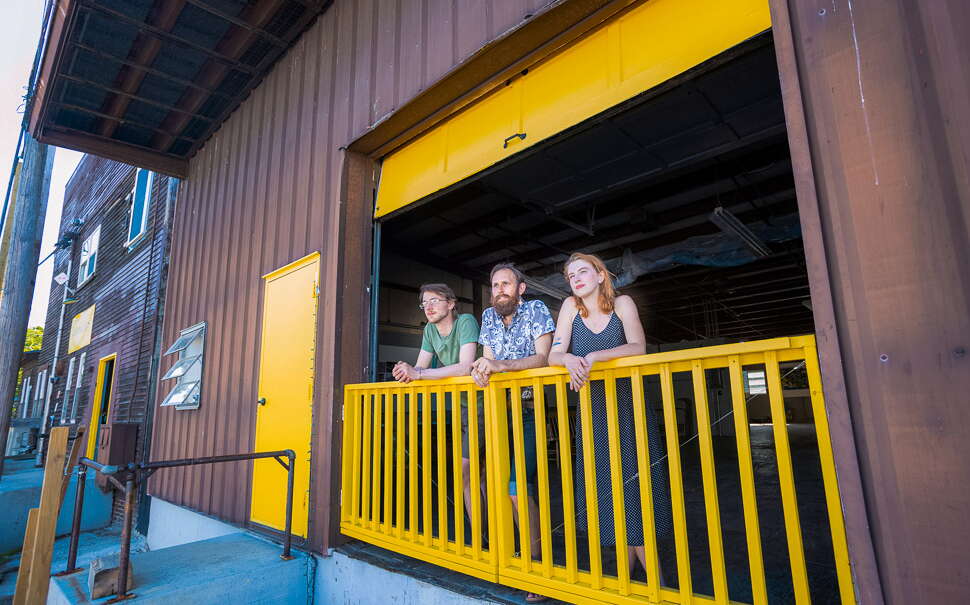
By last summer, enough space was ready to host an art show of over 120 known and emerging artists from across Maine.
Hotbed for the arts
“Norway has always been a really interesting hotbed in the arts,” says McLean. “There are artists, writers, poets and there is a big performing arts scene in Norway. So I think it is a natural place for a project like this.”
The plan is to open sections of the building gradually. The first space that’s opened is a dance studio. Recently they received a $100,000 grant from the state to build a coworking space and artist studios; and a $10,000 grant for programming from the Onion Foundation, a charitable organization in Auburn. The gallery hosted a call for artists that received 463 submissions.
The full renovation is estimated to cost $3 million to $6 million as a multi-year project. The nonprofit recently hired Portland architecture, construction and millwork firm Woodhull and tentatively plans to launch a capital campaign later this year.
Last year, Sipe introduced the project to Norway Savings Bank, which donated $5,500 for programming and $10,000 that year for construction, with another $10,000 planned this year.
“I really enjoyed meeting them and seeing the passion and enthusiasm with which they are approaching this project,” says Dan Walsh, the bank’s president and CEO.

“That energy is spreading throughout the area as the idea of having a vibrant arts center just off of Main Street gets closer to reality.”
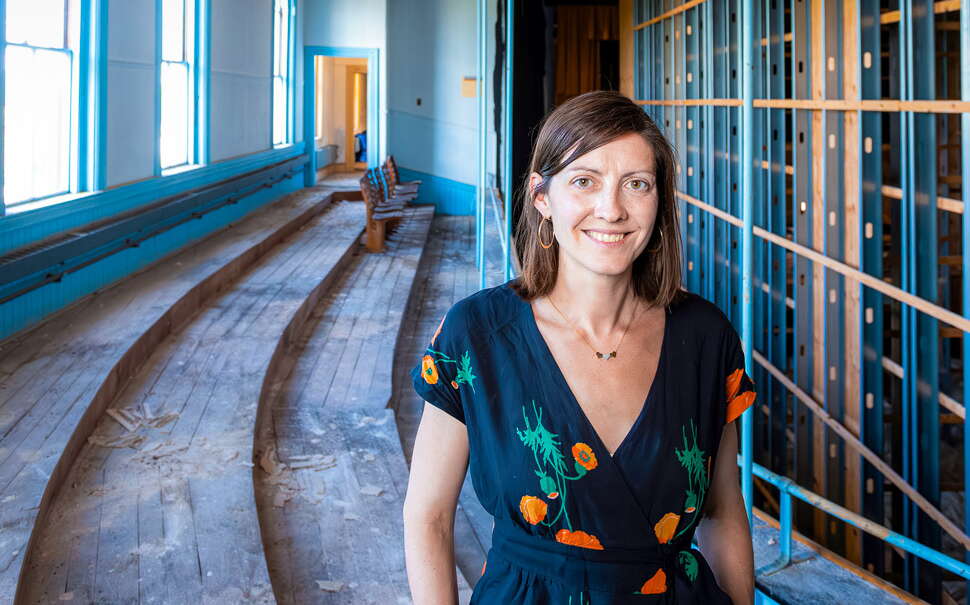
Making the turn
Norway and the region might be a thriving arts community — but it’s not always apparent, says Kelli Shedd, events and fundraising coordinator at the Norway Opera House and herself trained as a fine artist.
Some artists work at home down rural roads. A carpenter by day might be a musician gigging at the local pub in the evening or making albums during spare time.
Getting to Main Street requires making a left turn for drivers heading up Route 26 to attractions such as the Mt. Abram ski-and-mountain bike area. Once upon a time, says Berk, drivers didn’t take that turn or, if they did, they didn’t stop.
Now there’s a noticeable increase in foot traffic.
“It’s definitely become much more a destination,” says Berk. “We now have five or six places to eat and a variety of shops. Every storefront that’s occupiable, is occupied. I always hear from people looking for space on Main Street, so they rent very quickly. We’ve had very few businesses leave over the last few years.”
One thing’s missing.
“We struggle a little bit because we can only be a day destination,” says Berk. “We have little in the way of accommodations other than Airbnbs.”
The vision is to keep on keeping on. It’s expected the opera house’s performance space will be a boon drawing acts and uses of all stripes, from local to national.
The phased renovation will begin with work on the roof, trusses and back wall. After that, the board expects to launch a fundraiser to raise around $2 million over the next two years to match the federal funds awarded to Norway Downtown, which will provide interior work, sound systems and stage repairs.
That will allow the opera house to accommodate about 140 people and host performances and events, generating revenue while continuing to raise funds for a full interior renovation that’s expected to accommodate 500 people.
Long time coming
The area has been up and coming for a long time, says Shedd.
“A decade ago, when I moved here from New Hampshire, downtown Norway was nice, but there were shuttered windows,” she says. “The transformation that Norway Downtown helped create, that the community helped create, is amazing.”
That transformation brings people from surrounding communities, too.
“People come to Norway to enjoy art, visit our eclectic shops, eat pizza at the community garden, and to hear music out on Longley Square in the summer,” Shedd says. “It’s just a wonderful small community that expands beyond the immediate area.”
Mainebiz web partners
Reviving this structure is foolhardy.
Let it go.
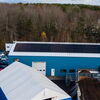


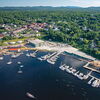



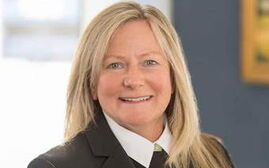

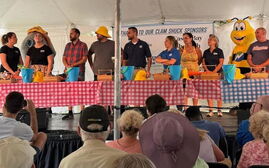




1 Comments